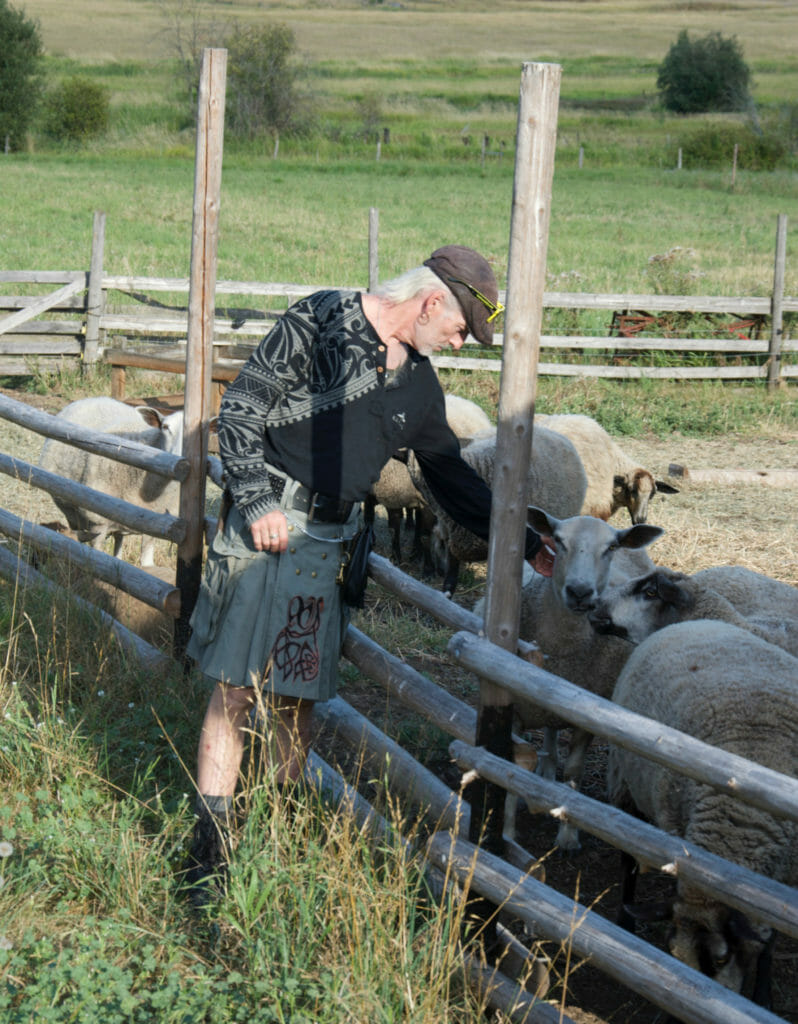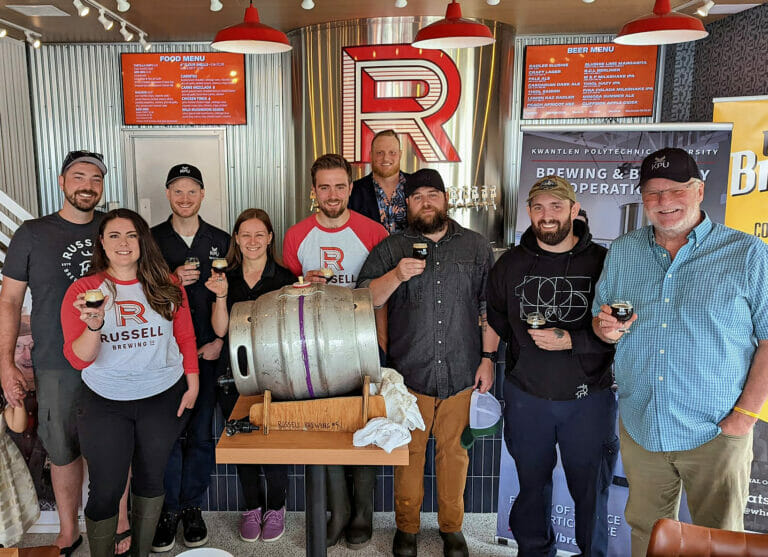From 2010 to 2019 the craft beer revolution expanded in British Columbia like never before!
Back on December 31, 2009, no one in British Columbia — not even the most optimistic beer lover, myself included — could have predicted what the next decade would bring. There were about 40 craft breweries in BC at the start of 2010. Just 14 new breweries had opened throughout the entire previous decade, showing slow, steady growth throughout the province. The last brewery to open in the 2000s was Victoria’s Driftwood Brewery, which began operating late in 2008. Who could imagine that in just a few years, 14 new breweries wouldn’t even be considered a good year for growth in the industry?


Becoming the Thirsty Writer
I decided to focus on writing about craft beer around the same time Driftwood opened. I loved visiting breweries to meet the people behind them, and felt there were stories to tell — about the interesting personalities of the brewers, about the creativity that went into the delicious beers they were making, and about their connections to the communities where they lived and worked — and more and more, it seemed that editors of magazines and newspapers were interested in sharing those stories with their readers. I found outlets for craft beer stories whether as the focus of a travel article for a newspaper or in-flight magazine, or as a focus piece for a consumer magazine.

At the start of the 2010s, it definitely felt like something was brewing here in BC. The Noble Pig Brewhouse opened in Kamloops in 2010, quickly followed by Hoyne Brewing (Victoria) and Tofino Brewing in 2011. Soon, I had a list of more than a dozen new breweries set to open on the horizon.
In rapid succession I had two stories published in BC Business magazine about the burgeoning craft beer industry. The first, “Pour Me Another,” which was published in September 2011, was a primer on craft beer that focused on three important industry leaders at the time: Gary Lohin, brewmaster of Central City Brewers & Distillers; Nigel Springthorpe, publican of the Alibi Room (who hadn’t opened Brassneck Brewery yet); and Gerry Erith, the then-manager of the Brewery Creek Liquor Store in Vancouver, who co-founded Vancouver Craft Beer Week and the BC Beer Awards, and was instrumental in bringing in craft beer from the United States and Europe (and was recently awarded a Legend award at the BC Beer Awards for his efforts).
My second BC Business article, “The Craft of Brewing,” was published in June 2012. It focused on three of BC’s newest breweries: Hoyne Brewing in Victoria; Parallel 49 Brewing in Vancouver; and Townsite Brewing in Powell River. The idea of a brewery opening in secluded Powell River up near the end of Highway 101 at the top of the Sunshine Coast seemed farfetched at the time, but Townsite’s success since then has certainly dispelled that notion. (We even awarded it with our inaugural Best Brewery Experience award in 2018.)

My book, Craft Beer Revolution: The Insider’s Guide to B.C. Breweries, which was published in May 2013, included 50 breweries. After spending several weeks on the road visiting breweries in 2012, I was able to say I’d been to every brewery in my book (something I can’t claim any more!). And as I toured the province hosting book launches in conjunction with breweries all over British Columbia that summer and fall, I saw even more reason to celebrate the industry as I heard about more and more new breweries in the works everywhere I went.
Indeed, the provincial government’s decision to allow breweries (and distilleries) to open tasting rooms in their facilities just as wineries had been allowed previously opened the floodgates. Take a look at these numbers to get a sense of the amazing growth:
~ 40 breweries in 2012
+ 3 new breweries in 2011
+ 7 new breweries in 2012
+ 12 new breweries in 2013
+ 20 new breweries in 2014
+ 20 new breweries in 2015
+ 20 new breweries in 2016
+ 28 new breweries in 2017
+ 21 new breweries in 2018
+ 28 new breweries in 2019
Finding the BC Ale Trail Among the Beer
Of course, this amazing growth led to the creation of the BC Ale Trail in 2016. Since then, we’ve been charting the continued expansion of the industry, creating videos and itineraries showcasing the wide range of options available in different regions throughout BC, and telling the unique stories of all the amazing breweries here. We also launched the BC Ale Trail app on June 1, 2019, which includes all 18 ale trails, 115 breweries, and 25 private liquor stores and ancillary businesses. So far, more than 7,500 people are using it.
With some amalgamations and closures, the total number of craft breweries in B.C. today stands at 191. The newest to open as of this writing is Dog Mountain Brewing, which joins Twin City Brewing in Port Alberni, a small and not exactly well-to-do community at the heart of Vancouver Island that would have seemed a long shot to boast its own craft brewery a few years ago, let alone two! And this is exactly what I find most exciting and gratifying about the big expansion in craft breweries — the fact that they have been opening and continue to open all over the province, including about a dozen that have opened in Northern BC from Prince Rupert on the west coast all the way across to Valemount close to the Alberta border and as far north as Fort St. John. Small communities all over the province have welcomed their own breweries, and they have been embraced by residents who want to support local businesses like butchers, bakers and farmers.

People often ask me if this sort of growth is sustainable. The industry has grown by an average of more than 20 breweries per year over the past seven years, more than tripling in size over that time! How can all these new breweries survive in a marketplace that is growing more and more competitive every year? I do think the industry will continue to expand at a similar pace for some time yet, but I wouldn’t recommend trying to open a brewery at a size that would require more than just retail sales through its own tasting room to survive right from the start. The wholesale market — selling kegs to restaurants and bars, and selling packaged beer to liquor stores — is where the competition is. After all, there are only so many taps available, and there is only so much space on shelves at liquor stores. But starting small with a tasting room focus and then growing into packaged beer and draught beer sales still seems to be a sound business approach.
And there are still many smaller communities in British Columbia without a brewery, or perhaps places with only one where there is room for another, and there are many urban centres with neighbourhoods that would welcome their own small brewery. Craft beer tourism is on the rise, both in terms of folks visiting B.C. from elsewhere and for residents exploring other parts of the province. Restaurants or taprooms with a craft beer focus are popping up everywhere, as are craft beer festivals and events.
The Next Decade in BC’s Craft Beer Revolution
So what does the next decade hold? I certainly don’t expect to see another 200 breweries (as in 20 new breweries x 10 years) in British Columbia on December 31, 2029, so in that sense I guess I do think the expansion of the industry will slow down a bit … eventually. But there are still more than 20 new breweries that are publicly in the works in British Columbia, and probably more that haven’t announced themselves yet. Check out our contributor Rob Mangelsdorf’s recent article listing 21 new breweries expected to open in 2020.

One thing that I see happening more and more is the trend of existing companies opening second breweries, whether right next door as was the case with 33 Brewing Experiment opening next to 33 Acres Brewing in Vancouver in 2018; a few doors down as Moody Ales did when it opened The Bakery Brewing on Brewers Row in Port Moody earlier this year; or in other communities entirely: the owners of Yellow Dog Brewing are building Neighbourhood Brewing in Penticton, which is expected to open this spring; Steel & Oak Brewing (New Westminster) is a partner in Herald Street Brew Works, which is under construction in Victoria; and Abbotsford’s Field House Brewing is building Field House CHWK in Chilliwack, targeting an April opening.

And the other trend I’m watching is farm-based breweries. This is not exactly a new idea — after all, BC’s original farm brewery, Crannóg Ales, will celebrate its 20th anniversary in 2020, Persephone Brewing has been operating on its small farm since 2013, and Pemberton Valley BeerWorks (The Beer Farmers) has been open since 2018 — but it’s an idea that seems to be gathering more and more momentum. Farm-based Barnside Brewing hopes to open in a converted barn not far from Four Winds Brewing in Delta soon; their plan is to use their own barley and hops as much as possible. Three other farm-based breweries are also in the works for 2020: Locality Brewing (Langley), Rusted Rake Brewing (Nanoose Bay), and Ursa Minor Brewing in Burns Lake.
View this post on Instagram
What else is trending? In terms of beer styles, sour beers and hazy IPAs continue to be very popular among brewers and consumers alike. The other interesting flavour trend I’m watching is the world of wine-beer hybrids. Many breweries use wine barrels for barrel-aging beers, especially on the sour side of the flavour range, but some breweries are also using grape juice or grape must (which contains the skins, seeds and stems) as an ingredient in beers. Field House Brewing and Yellow Dog Brewing seem to be leading the charge in this area, but others including Main Street Brewing and Luppolo Brewing have also been exploring this style. We will take a look at this topic in greater detail in a future blog.
Here’s to the 2010s — the most exciting decade in craft beer history since the microbrewing movement kicked off in the 1980s. And looking ahead to the future, there’s no reason to think that the 2020s won’t be just as interesting. Cheers!




